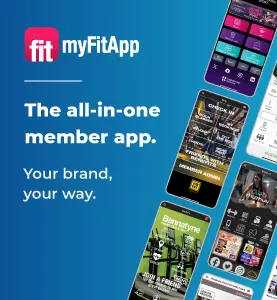Tell us about your career so far...
I’ve spent much of my career in advertising and video gaming, being exposed to all kinds of tactics designed to change customer behaviour. But I realised many people didn’t know why certain things worked, or understand the psychological principles driving behaviour – they just knew they were effective.
Similarly, I’ve spent a lot of time banging my head against the wall trying to figure out why people were, or weren’t, engaging with certain products – why some products and services fly and others flop. I needed to understand user behaviour better, and find out what made some experiences habit-forming – how products could create habits and change behaviour.
And you’ve come up with a theory called the Hook Model. What are hooks?
Hooks are experiences that connect a user’s problems with a company’s product frequently enough that customers form associations. Over time, these associations spark unprompted engagement with the product – in other words, habits are formed.
The use of the product is generally associated with one of three things: an emotional pain point, an existing routine, or a particular situation. For example, what do people turn to when they’re lonely and seek connection? Facebook. What do we do when we feel uncertain? We Google. And what about when we’re bored? Many people open YouTube, Pinterest, or check sports scores or stock prices. Lots of products address the pain of boredom.
So what is the Hook Model?
It’s a four-step process – trigger, action, variable reward, and investment – that products can use to encourage certain desired customer behaviours.
Triggers are cues to action and come in both internal and external forms. A pang of hunger, for instance, prompts us to snack; an email alert prompts us to open the message; a glance in the mirror may prompt us to embark on a diet.
The action is the behaviour that we engage in to obtain the desired reward: we snack, we read, we diet.
The variable reward is the result that provides physical, intellectual, psychological or emotional satisfaction: a feeling of satiety, of being well informed, of looking slimmer. The variable part of this hook is important in that people crave variety; they want their next experience to be new, bigger, better. They’re rewarded but are left wanting more.
Investment refers to things a user does to increase the likelihood of taking the same action again. For instance, clicking ‘reply all’ ensures further emailing; buying new training gear boosts their motivation to return to the gym.
What are the benefits of the Hook Model for business?
By leading consumers through consecutive hook cycles – trigger, action, variable reward, investment – companies are able to bring users back again and again without depending on costly advertising or aggressive messaging.
Habit-forming products enjoy faster growth, greater pricing flexibility and greater defensibility. They can also help users to incorporate healthy behaviours into their daily lives.
Not every business requires a user habit, but every business that does need one has to have a hook. One need only look at fitness crazes past and present – from Jazzercise to CrossFit to SoulCycle – to see that they all employ hooks.
How can gyms implement this model?
If we look at regular users of health clubs, the hook is already in full effect: using the gym becomes a habit, and the more a member invests in their gains, the more committed they become.
However, to hook their less engaged users, clubs would benefit greatly by asking themselves the following questions. Firstly, what’s the user’s psychological itch – the external trigger that prompts them to take action? Is the action simple to do? What’s the reward, and does it leave the user wanting more? And finally, what’s the investment that will increase the likelihood of their repeating the hook cycle?
The internal trigger could be negative – guilt – or positive, such as the anticipation of a rewarding workout. The action is to go to the gym. The reward is the workout results and the social connections that accrue. The investment might be actively seeking friendships at the gym, and making plans to work out together, to help motivate you to return.
However, the first step is to figure out what behaviour you actually want to change, and to make sure you’re promoting the right behaviour – if not, your efforts will backfire and customers will be left frustrated and unhealthy.
For example, for years we advised people to eat low fat to lose weight. Now it turns out the science was wrong: the low-fat, high-carb diet we recommended made them gain weight, and in some cases become diabetic. Even today, it’s a little disingenuous when clubs say they promote healthy lifestyles but sell fruit smoothies loaded with sugar and carbs.
























































